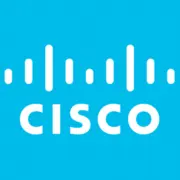Solid, straightforward, and reliable
Updated January 24, 2024
Solid, straightforward, and reliable

Score 8 out of 10
Vetted Review
Verified User
Overall Satisfaction with Cisco AnyConnect
We use Cisco AnyConnect to facilitate secure access to office network drives for employees who are working remotely. This enables us to maintain a consistent, stable system for file organization and management that employees can access regardless of whether they're in the office on a particular day. This is a fairly narrow use case, but it is important for the solution to be straightforward and consistent.
Pros
- Straightforward
- Consistent
- Reliable
Cons
- Sometimes a bit laggy
- Secondary functionalities can be obtuse
- Slightly old school UI
- Better telework integration
- More consistent file organization
- Reasonable ROI
Yes, our organization has benefited from this capability. When users don't have access to a simple and/or reliable remote access solution, they tend to develop systems of their own, which results in insecure and inconsistent file management across the organization as a whole. Cisco AnyConnect has addressed this concern by enabling us to implement a corporate network system that users are comfortable actually using.
Cisco AnyConnect is a little more straightforward and works better in legacy contexts, in our experience. That being said, it does lack some of the functionality and information provided by OpenVPN, and other logistical factors are relevant as well.
Do you think Cisco AnyConnect delivers good value for the price?
Yes
Are you happy with Cisco AnyConnect's feature set?
Yes
Did Cisco AnyConnect live up to sales and marketing promises?
Yes
Did implementation of Cisco AnyConnect go as expected?
Yes
Would you buy Cisco AnyConnect again?
Yes
Cisco Security
Cybersecurity is pretty core to our organization's core objectives. As a medium-sized law firm with about 40 attorneys, we handle a lot of sensitive client information in a variety of procedural and technological contexts. The driving force behind our investment in cybersecurity is our interest in enabling attorneys to use and access relevant files in a wide array of functions and places other than the office, without compromising client trust.
The objectives and expected outcomes for the security program as a whole weren't particularly relevant here, to be honest. That being said, Cisco was simply the option that was most compatible with our existing systems, most accessible to a variety of users, and most well suited to our needs in general.
Cisco AnyConnect was primarily chosen because it met our security and file-safety needs and was well integrated with our existing file management and cybersecurity systems. It was also chosen because we felt it was well suited to use by a wide range of users with a wide variety of comfort levels with technology.
I suppose AI might be more relevant to cybersecurity work than to legal work, for example. I can certainly imagine it serving to automate certain simple tasks, or performing initial threat detection screenings. This feels like more of an augmentation of existing tools than a full transformation, though. I'm certainly not sure how it would affect two-factor authentication, which somewhat necessarily requires users to gain access on an individual basis.
We do not currently use predictive threat detection and analysis other than to whatever extent it happens to be included in cybersecurity platforms that we already subscribe to and/or use. At this time, the value-add hasn't been made clear to us in a way that would justify making it a priority.



Comments
Please log in to join the conversation